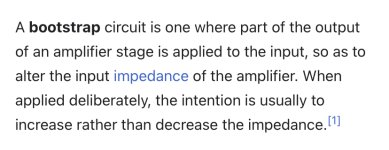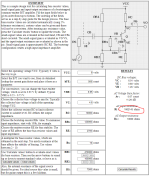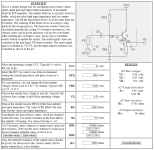mzy12
Active member
Hello!
I was watching a video trying to understand how emitter-follower amps work. In relation to the C-Buffer, there are some things I don't understand - I can't find any model for emitter-followers that include C2, C3, R4 and R7. ( I checked this website and this website)
I also wonder about the input impedance - this calculator says that it's around 600k, assuming, generously, that the BC459 is operating constantly at its max hfe of 500. I would have thought that the impedance would ideally be more around 1M. Maybe R4 is influencing the impedance in a way that I don't understand.
Any help would be appreciated, thanks!
I was watching a video trying to understand how emitter-follower amps work. In relation to the C-Buffer, there are some things I don't understand - I can't find any model for emitter-followers that include C2, C3, R4 and R7. ( I checked this website and this website)
I also wonder about the input impedance - this calculator says that it's around 600k, assuming, generously, that the BC459 is operating constantly at its max hfe of 500. I would have thought that the impedance would ideally be more around 1M. Maybe R4 is influencing the impedance in a way that I don't understand.
Any help would be appreciated, thanks!







